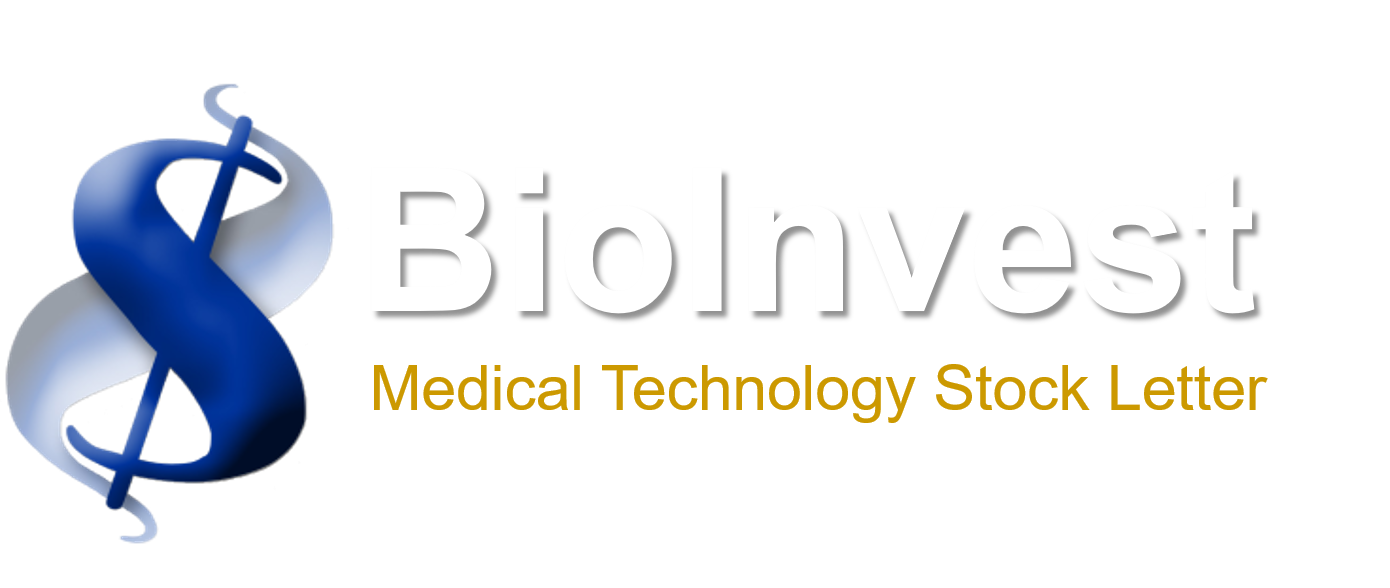
April 6, 2018
One of the keys to long-term biotech investing is finding the big winners and riding them to huge gains, writes Medical Technology Stock Letter editor  John McCamant  and frequent MoneyShow.com contributor.
Medical Technology Stock Letter has had many such winners over the years, including Genentech and Pharmacyclics. We provided multiple entry points to invest in Pharmacyclics starting at $17 and in three-plus years the company was sold to AbbVie for $262 per share or $21 billion.
Over the last year and a quarter, our subscribers have been enjoying incredible gains with the Four Horsemen:
- Esperion Therapeutics
- Madrigal Pharmaceuticals
- Nektar Therapeutics
- Sangamo Therapeutics
And just like Pharmacyclics and Genentech, we raised out Buy recommendations multiple times providing profitable entry points as these stocks soared. The Four Horsemen cover the gamut of the hottest drug development areas including NASH (nonalcoholic steatohepatitis), gene therapy and immune oncology. They also are developing treatments for tried-and-true sectors such as lowering cholesterol and treating pain. Most importantly, all Four Horsemen are run by excellent management teams that have a proven track record of creating outstanding value for their shareholders. In fact, two of the biggest events in the drug development world in the first quarter of 2018 were delivered by Nektar Therapeutics (deal with Bristol-Myers Squibb) and Sangamo (deal with Gilead Sciences/Kite Pharma).
Madrigal Pharmaceuticals is a midstage biotech company developing therapies for metabolic diseases including nonalcoholic steatohepatitis (NASH or fatty liver disorder) and heterozygous familial hypercholesterolemia (FH, genetic cholesterol elevation).
The lead drug development candidate at Madrigal is MGL-3196, a once-a-day pill that specifically targets the thyroid hormone receptor (THR)-beta agonist that stimulates liver fat metabolism resulting in reduced circulating cholesterol and triglycerides with the potential to address NASH and HeFH.
NASH is a large, unmet market opportunity and Madrigal’s experienced management team, led by industry superstar Paul Friedman, is poised to seize the billion-dollar market. Friedman has a great track record of creating shareholder value with both DuPont Pharma and Incyte.
Madrigal is studying MGL-3196 in a Phase II placebo-controlled trial (n=125) in NASH. Successful proof-of-concept data was delivered late last year with positive 12-week imaging MRI-PDFF data showing a >30% liver fat reduction in 60.3% (75% at high exposure) of treated vs. 18.4% of placebo patients as well as improvement in biomarkers including blood lipids (cholesterol, triglycerides and lipoprotein(a) associated with cardiovascular risk) and elevated liver enzymes.
Madrigal MDGL-3196 EASL abstracts released – Abstracts for the European Association for the Study of the Liver (EASL) meeting (April 11-15) in Paris, France, were recently released. The conference features presentations relating to non-alcoholic steatohepatitis and Madrigal has been selected for a plenary session. Madrigal’s abstract detailing full MGL-3196 12-week Phase II data in NASH includes incremental updates on the significant absolute reductions in liver fat per MRI-PDFF imaging and the broad lipid and liver enzyme reductions.
The abstract is usually a placeholder. (The submission deadline was several months ago, and we expect new updates at the European meeting that will provide additional positive efficacy and safety info.)
EASL will be an important conference for Madrigal as we expect additional biomarker data and a substudy incorporating the Perspectum LiverMultiScan (MRI scan) for a read on the inflammation benefit. EASL will also be important for Madrigal as management will be able to provide more details on 3196’s outstanding potential as a best-in-class NASH drug. In our view, 3196 has already demonstrated significant lipid reductions and an excellent safety profile with a once-a-day pill. After EASL, Madrigal will deliver the 36-week liver biopsy data for 3196 in May. We expect the 36-week biopsy data to be positive, which would position Madrigal to start a pivotal Phase III trial as early as Q3:18. In our view, 3196 is the leading drug development candidate for NASH and Madrigal’s experienced management team has the right stuff to drive 3196 all the way to FDA approval and continue to create substantial shareholder value.
Esperion Therapeutics is a development-stage biotech focused on new therapies for lowering bad cholesterol (LDL). The company is run by an experienced management team that is developing their lead candidate bempedoic acid (BA) with a Big Pharma level of expertise. Esperion has reported excellent top-line results from a Phase II trial (n=58) evaluating 180mg bempedoic acid (BA) added to PCSK9 antibodies compared to placebo and a PCSK9 MAb with a placebo adjusted 30% LDL lowering, consistent with that seen from prior non-statin studies (-27% vs. +3% placebo) at eight weeks. The drug candidate also significantly reduced hsCRP by 34% (marker of inflammation), and significantly lowered total cholesterol and apoB. While a small, short-term study, we are encouraged that bempedoic acid (BA) continues to show both excellent efficacy and safety. The drug candidate was well-tolerated with no significant differences in AEs (32.1% vs. 23.3% pbo), SAEs (3.6% vs.0% placebo), or muscle-related AEs (3.6% vs. 3.3% placebo).
There were no differences in the rate of discontinuations due to AEs or muscle-related AEs. There were no reported elevations in LFTs. While we are encouraged by the additional LDL-C lowering on top of PCSK9 antibodies and clean safety profile, we do not expect much real-world use as Esperion is not planning any additional combo work with PCSK9s. Esperion is already developing the BA/ZE combo as a once-a-day pill. The next big catalyst for Espiron will be the top-line data from the largest BA Phase III, the 52-week safety study on top of max tolerated statin in May. This trial completed enrollment in early 2017 and will be another important de-risking for BA’s safety profile.
Esperion is poised for a busy 2018 with multiple Phase III BA data readouts expected over the next six months. The next Phase III studies to readout will be the data from the 24-week study with low or no background statin therapy and the key 52-week long-term safety and efficacy on top of max tolerated statin, both in May (Study 3 and 1, respectively). In addition, the bridging study to support bempedoic acid/Zetia combo pill is expected in August. Finally, the 52-week study in ASCVD and/or HeFH on background of max tolerated statins (Study 2) is expected in September. In our view, the Phase III will be positive, which will position Esperion to file for BA approval in the first half of 2019. We think the Phase III data for the Esperion BA and BA/ZE combos will be positive and serve as significant catalysts for the stock.
Sangamo Therapeutics is a leader in the development of gene editing, and gene and cell therapies based on their proprietary zinc finger nuclease (ZFN) technology platform. Sangamo is a classic biotech turnaround story as the company had a management overhaul in 2016 that has positioned the company for significant success. A great example is the recent partnership with Gilead Sciences/Kite Pharma. Despite being pre-clinical and early stage, Gilead is paying $150 million upfront in cash and up to $3.1 billion in milestones plus tiered royalties on ten Sangamo-derived cancer drug candidates (or $300 million per product). Combining the Kite, Gilead expertise and infrastructure with Sangamo will create a transformative leader in the field. The terms of this deal (like the Nektar Therapeutics/Bristol-Myers Squibb deal of late) are resetting the bar higher for the growing value of truly novel products and technologies that biotechnology is creating – this time led by Sangamo.
Deal structure
Upfront: Â Â Â $150 million cash up front
Breadth:Â Â Â Â $3.1 billion in milestones/R&D or ~$300 million per product
Royalties:Â Tiered royalties on each product.
Sangamo’s significant progress outside of cancer has led to this deal. Sangamo’s ZFN and AAV technology is now applicable for off-the-shelf cancer therapies for both liquid and solid tumors – and Gilead Sciences/Kite Pharma is the best possible partner for many reasons. Gilead and Kite were sold by what Sangamo has done with its technology outside of oncology. Sangamo’s technology is developing the next generation of autologous CAR-T and T cell receptor (TCR) technology in a very broad array of virtually endless cancers. In our view, the potential to create off-the-shelf CAR-Ts is game-changing.
When Kite Pharma came looking for a gene-editing partner (a public goal of theirs), they chose Sangamo over all the others (Crispr Therapeutics, Editas Medicine, etc.). That in and of itself, says a lot about the strength of Sangamo’s platform.
More Sangamo deals coming in more therapeutic areas. In addition to oncology, the breadth of the Sangamo technology is and will develop more gene therapy/editing in vivo in various tissue types.
This will result in additional partnerships and Sangamo will do their own where they can (Orphan/rare diseases).
Nononcology gene therapy medicines in other areas such as autoimmune.
Clinical Trials Underway – Data From Two Trials By Mid-Year
SB-913 – MPS II – CHAMPIONS Study – preliminary data mid-2018
SB-318 – MPS I – 5 sites screening
SB-FIX – 4 active sites; slower enrollment
SB-525 – Top line sometime mid-2018 – Scientific Meeting Hem. A (with partner PFE)
ST-400 – beta thal – ex vivo-non-viral approach may be an advantage over lenitiviral (e.g., BLUE) – filed IND, sites open, first date treated by mid-2018
We have known and followed Sangamo for a very long time. The details of the Gilead/Kite deal and the ongoing progress in their patented ZFN technologies are at last opening the visibility of the vast potential to Wall Street. The management team at Sangamo is truly impressive and continues to grow as they attract seasoned executives on a global basis. In our view, they are the under-recognized leader in the gene editing and therapy field and we expect a steady stream of clinical and strategic announcements going forward that will serve as positive stock catalysts.
